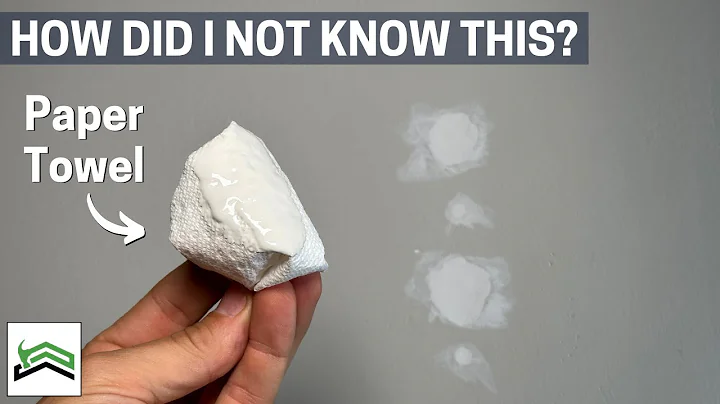Winning Your Long-term Disability Appeal - Step-by-step Guide
Table of Contents
- Introduction
- Identifying the Deadline for Your Appeal
- Enforcing Your Employment Rights
- Gathering the Documents and Information for Your Appeal
- Identifying Other Benefits You Might Qualify for in the Meantime
- Analyzing the Decision Letter for Reasons of Denial
- Identifying Documents to Refute the Reasons for Denial
- Preparing a Cover Letter for Your Appeal
- Conclusion
Introduction
In this article, we will provide you with a step-by-step guide on how to appeal a long-term disability denial. Facing a denial can be overwhelming, but by following these seven steps, you will have a clear process to navigate your appeal. Additionally, we will share some useful tips along the way to improve your chances of success.
Identifying the Deadline for Your Appeal
The first and foremost step in the appeal process is to identify the deadline for your appeal. Missing this crucial deadline can jeopardize your chances of overturning the denial. Look for the deadline in the decision letter you received from the insurance company. It is typically mentioned on the last page, in the last paragraph or few paragraphs. Pay attention to whether it specifies a specific date or a certain number of days (e.g., 90 days, 60 days). If it mentions a specific number of days, it usually counts from the date on the letter itself. Record this deadline in your calendar to ensure you submit your appeal on time and avoid any unfortunate consequences.
Enforcing Your Employment Rights
When you receive a denial from the insurance company, they will also notify your employer. Some employers may use this opportunity to pressure you into returning to work or threaten termination. In such cases, it is essential to enforce your employment rights. Schedule a meeting with your doctor to obtain written confirmation of your incapacity to work and your intention to appeal the denial. Provide this information to your employer, along with a declaration expressing your disagreement with the denial decision. Most employers will cease their aggressive actions at this point. However, if your employer persists, you may need to seek assistance from human rights commissions or explore legal remedies such as wrongful termination.
Gathering the Documents and Information for Your Appeal
Before proceeding with your appeal, gather all the necessary documents and information. Start by having a copy of the denial letter, as it contains crucial information about the decision. If you don't already have it, request the insurance company to send you a written copy of their decision. It is also beneficial to obtain your group benefits booklet, which outlines the long-term disability benefits provided. If you have a collective agreement in a unionized environment, make sure to have a copy of it, as it may impact your disability claim. Finally, consider obtaining your complete medical records from your family doctor to support your appeal. These records should cover the period when your disability began to significantly affect your ability to work.
Identifying Other Benefits You Might Qualify for in the Meantime
Since your long-term disability benefits have stopped due to the denial, it is essential to identify any other benefits you may be eligible for during the appeal process. One common option is Employment Insurance (EI) sickness benefits. If you haven't applied for these benefits previously, now is the time to do so. They can provide financial assistance for up to 15 weeks while you pursue your appeal. To ensure a smooth transition, make sure your EI claim starts after the date of your last long-term disability payment. Be cautious if the insurance company offers to backdate the benefits, as it may create complications and require you to repay the overlapping funds. Additionally, don't overlook the possibility of creditor disability benefits, which are often attached to loans or mortgages. Check if you have any existing disability coverage and submit a claim if applicable.
Analyzing the Decision Letter for Reasons of Denial
To effectively appeal the denial, it is crucial to analyze the decision letter and identify the specific reasons for the denial. Many people approach their appeals without fully understanding the grounds on which the insurance company based their decision. By starting with a focused analysis of the decision letter, you can develop a targeted strategy. Read the letter carefully and underline or highlight the sections where the reasons for denial are explained. Number these sections to ensure clarity. You may notice that some reasons are repetitive, so consider grouping and numbering them accordingly. By identifying and documenting these reasons, you can formulate a stronger appeal.
Identifying Documents to Refute the Reasons for Denial
Once you have identified the reasons for denial, it is time to gather the necessary documents to refute each of those reasons. Create a table with three columns: the reason for denial, potential arguments against it, and the corresponding supporting documents. Focus on obtaining documents from healthcare professionals and treatment providers who have been involved in your case. Reports or statements from these experts carry significant weight and can effectively challenge the insurance company's reasons for denial. Consider providing your doctor with a copy of the denial letter, highlighting the relevant sections, and requesting a report specifically addressing those reasons. By providing context and guidance to your healthcare provider, you increase the chances of receiving a comprehensive and persuasive report to strengthen your appeal.
Preparing a Cover Letter for Your Appeal
Accompanying your appeal with a well-crafted cover letter is crucial. This letter will serve as an introduction to your appeal and inform the insurance company about the documents you are submitting. Begin the cover letter by stating that you are appealing the decision dated [insert date]. Clearly mention that you have attached new documents to support your appeal. Use a professional tone throughout the letter without making personal attacks or using offensive language. Remember that this correspondence may be reviewed by lawyers and judges later on, so you want to maintain a positive impression. Respond directly to the reasons for denial stated in the decision letter; however, avoid getting into legal arguments or citing irrelevant information. Keep the letter concise, focusing on the factual errors or information gaps you intend to clarify. If you have any upcoming appointments or additional relevant information, include it in the cover letter to keep the insurance company informed.







